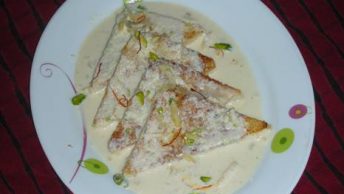The 11th century Brahmeshwara temple in Bhubaneswar is a milestone in the temple architecture of Orissa.
It was built in 1061 by Queen Kolavati who was
the mother of the Somavamsi king. An inscription
at the temple which is now believed to have been
lost stated that Kolavati presented many
beautiful women to the Temple …as per the
Devadasi tradition.
Exhibiting a bit of affinity with the more ancient
Mukteswara Temple in terms of sculptural
iconography such as decoration of the
(porch) with lion head carvings, the temple also
incorporates certain innovative ideas like
introduction of a great number of musicians and
dancers on the exterior walls, and the use of iron
beams in the construction for the very first time.
It is said to be the embodiment of the maturation
of the Kalinga order.
The temple has a living deity, which is symbolised
through the saffron pennant on top of the
temple. It is dedicated to Lord Shiva and is made
in the panchayatana form, with four smaller
shrines around the main one.The figure of
Chamunda standing on a corpse with a trident
and human head is kept on the western facade.
The surface of the temple is richly covered with
finely made sculpture revealing the expertise of the artists of Orissa. Alasya kanyas remind one of
the joy of creation, and the sculptures of the divinities convey the essence of the grace that
underlies it all. Carvings include those of dancers,
musicians, floral motifs, flying figures, deities
and lion head motifs.
The slab-sealing interior is carved as an inverted
lotus with serpentine figures at corners. The
procession of armed infantry,cavalry and
elephants, animals and birds adorn the friezes of
the structure.
The earliest depiction of ships in Orissa is in a sculptured frieze (showing two ships) – it was
found near the Brahmeshwara temple and is now
kept at the Bhubaneswar museum.







